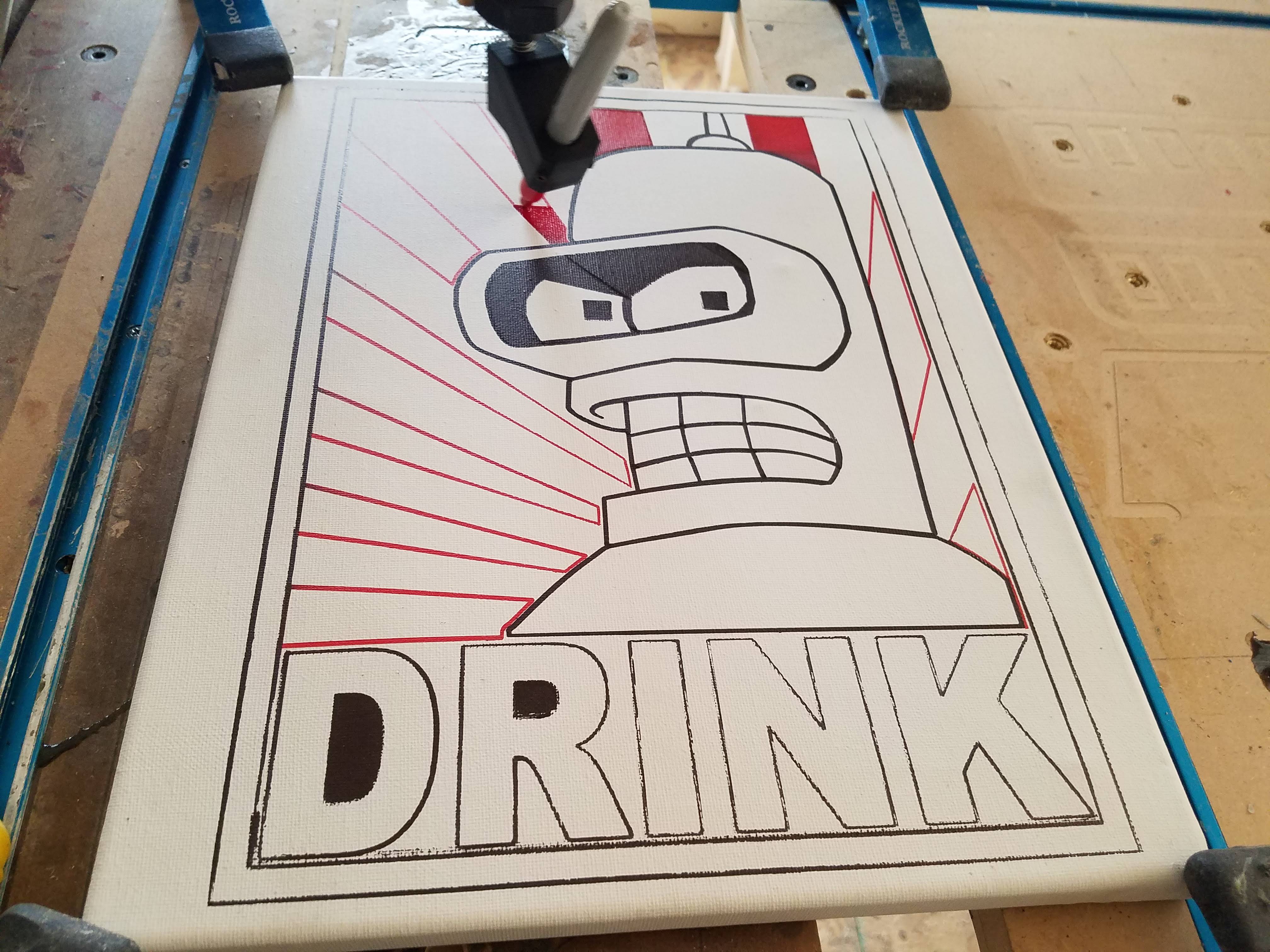I don't take any part of your reply to be insulting, no worries there. I'll start off with something to think about - not every CNC machine cuts.
So, for scenario B with the zone modified feed rate, the tool in this case being a pen (or a laser with fixed output level, or an air brush with a fixed nozzle size and flow rate) would leave less ink (or the laser would burn not so deep/dark, air brush would leave less paint, etc). This absolutely could be accomplished with multiple overlapping tool paths creating the different levels of the gradient, but that also increases the run time of all the tool paths and goes over the same ground multiple times. But if a zone feed rate (zone gradient effect?) were implemented similar to your spiral operation (with the center being user defined, along with # of rings, eccentric VS concentric) the toolpath would go faster the farther from center the tool got. This could have an interesting effect on a crosshatching texture, too. See the attached picture of a test piece I did. It's an attempt at Bender on canvas using Sharpies. Sharpies and canvas don't mix well, even if the pen holder is spring loaded - the canvas chews up the tip rather quickly. The gradient effect would work quite well on the stripes, but could also be useful to force focus in a particular spot. I realize after writing all of this that it's a request for a niche function few people might use.
As for dynamically controlling spindle speed - that sounds like a good complimentary feature for trochoidal milling.
The scenario A function that I described is essentially a finishing cut pass. In a discussion about another piece of software used for cabinets, objects that were below a certain size had the option of having the last pass slow to a specific feed rate in an attempt to not damage or eject the piece. I imagine the use of either spiral upcut or downcut bits combined with not babysitting the machine because it's not cost effective in a production shop, having the machine slowdown on the last pass cuts down on tear out or projectile ejection. For the interior of pockets, spiraling the tool all the way to desired depth inside the pocket profile at a slow steady descent usually works as long as the piece in the center doesn't cause tear out when milled away. While cutting a piece of aluminum for a Jeep switch face plate, one of the slugs from a switch hole got caught on the bit just before it was completely cut free and it ended up pulling the whole piece up and into the bit (of course it was the part that was farthest from any of the 6 bolts holding the stock down). Had I either manually slowed the feed rate down, or the toolpath generator auto-magically applied the size less than X @ last pass rule on the switch holes, the slug probably would have been cut free without damaging the main piece.

